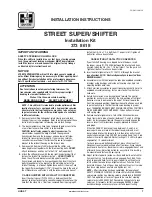
3. Chassis
22
The minimum loading capacity includes objects that users may
carry in the van which are not included in the mass in running
order (MIRO) or in the optional extras (e.g. clothing, toilet and
kitchen fittings, food, camping equipment, toys, pets).
The remaining additional load (
5.
) must always be greater than
or equal to the minimum loading capacity (
6.
); this must be taken
into account when determining the configuration of the vehicle.
If the vehicle does not hold the equipment and liquids set
out in the table in Item 2 (mass
in running order (MIRO)
),
the loading capacity/additional load (Item 5) can be incre-
ased by this value.
3. Additional equipment / optional extras
Weight of the equipment that was assembled by the manufac-
turer in or on the van in addition to the standard equipment.
These optional extras will be shown in the actual weight of the
vehicle if
− they are not part of the standard scope of equipment,
− Hobby or the manufacturer of the base vehicle were re
-
sponsible for assembling them,
− the customer can order them.
4. Actual mass
Sum of the mass when ready to drive and the optional extras
or additional equipment assembled by the manufacturer.
5. Loading capacity / payload
Difference between the technically permissible maximum weight
and the mass in running order, plus the weight of the passen-
gers and the weight of the additional equipment.
6. Minimum loading capacity
The loading capacity must be equal at least to the formula
10 x (n + L)
, whereby:
n
- highest number of passengers plus the driver
L
- total length of the superstructure in meters
















































